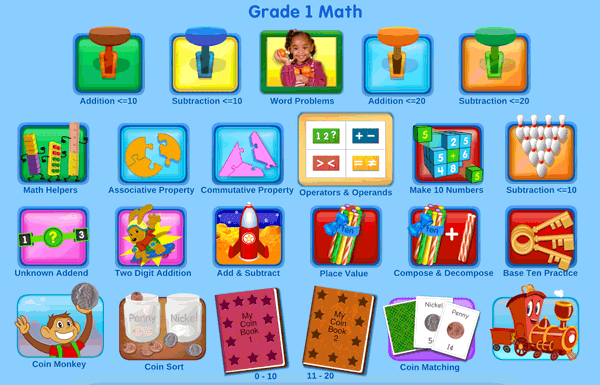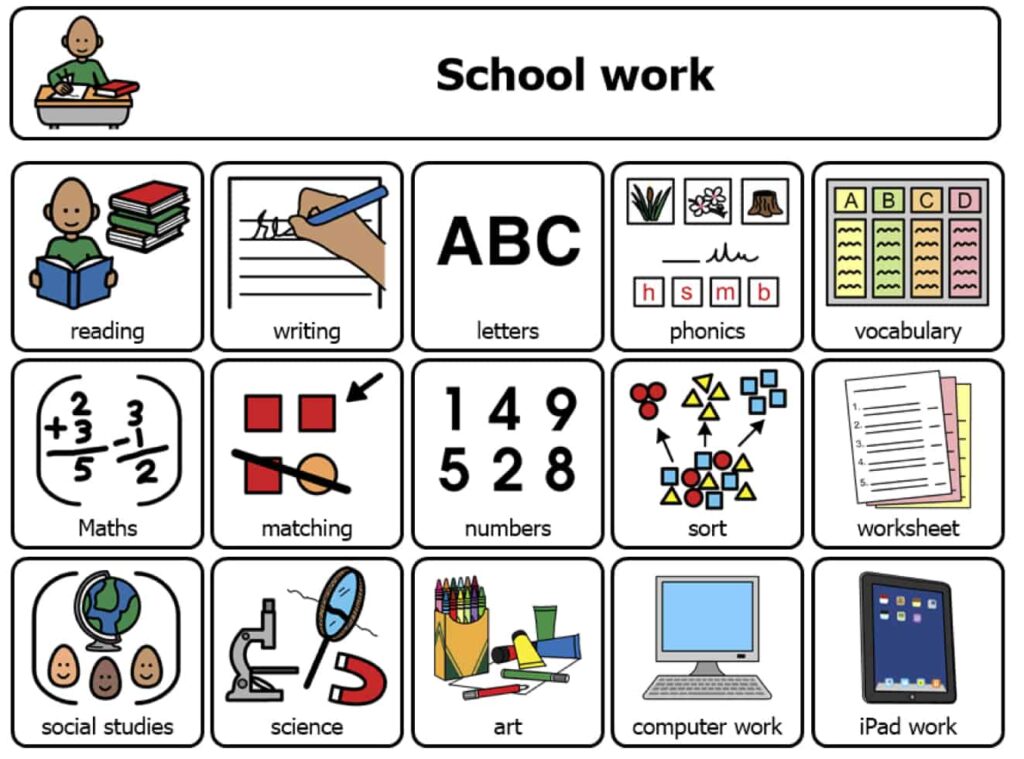After discussing my topic and thinking about what the first prototype could look like, I have decided to narrow down my approach. The goal is to create a simple learning experience from start to finish, that could be tested in a real life situation.
First step was to discover the struggles that children with cognitive disabilities face in traditional learning environments. After that, I looked into different curriculums for the first 3 grades of elementary school, as that would be the demographic that I want to address for the start. While doing my research, I came across an interesting observation. Children with cognitive disabilities, more specifically ASD, often struggle with subjects like math, but when approached carefully by their teachers, with special care and focus on the subject, they thrive and become very good.
Looking into existing solutions for interactive math learning platforms, I’ve realizes that there is a lot of online learning platforms that offer interactive and engaging experiences. Platforms like Starfall and CTC Math are popular choices among educators and parents for enhancing math learning. However, when it comes to catering to children with cognitive disabilities, there is room for improvement.
1. Starfall: A Playful Approach to Learning
Strengths
Engaging Content – Starfall is renowned for its engaging and visually appealing content that captures the interest of young learners. Its use of animations, songs, and interactive activities makes learning fun and helps to keep students engaged for longer periods.
Foundational Skills Focus – The platform emphasizes foundational math skills, such as counting, addition, and subtraction, which are crucial for young learners and serve as the building blocks for more complex math concepts. This is particularly beneficial for students who need to strengthen their basic math skills.
Accessibility – Starfall offers a user-friendly interface with simple navigation, making it accessible for young children and those with limited digital literacy.

Limitations for Students with Cognitive Disabilities
Lack of Personalized Learning Paths – While Starfall provides a range of activities, it lacks the ability to create personalized learning paths that adapt to the individual needs and progress of each student. Children with cognitive disabilities often benefit from tailored instruction that meets their specific learning requirements.
Limited Support for Higher-Order Skills – The platform’s focus on basic skills means it does not adequately support the development of higher-order thinking and problem-solving skills, which are essential for more advanced math learning. This can limit its usefulness as students progress to higher grade levels.
Minimal Sensory Accommodations – Starfall does not offer significant sensory accommodations such as adjustable audio levels, customizable visual settings, or alternative input methods that could benefit students with sensory processing disorders or other cognitive disabilities.

2. CTC Math: Comprehensive Learning with Room for Growth
Strengths
Comprehensive Curriculum – CTC Math offers a comprehensive curriculum that covers a wide range of math topics from basic arithmetic to advanced calculus. This breadth ensures that students can progress through the curriculum at their own pace and access material appropriate for their grade level and ability.
Interactive Lessons – The platform features interactive lessons with step-by-step video tutorials, which can be particularly helpful for visual and auditory learners. This format allows students to revisit and review lessons as needed, reinforcing their understanding of key concepts.
Assessment Tools – CTC Math provides extensive assessment tools, including quizzes and tests that allow educators to monitor student progress and identify areas where additional support is needed. This feature is useful for tracking the development of students with cognitive disabilities and tailoring instruction to their needs.

Limitations for Students with Cognitive Disabilities
Limited Customization – Despite its comprehensive curriculum, CTC Math does not offer significant customization options to adapt lessons to the unique learning needs of students with cognitive disabilities. Personalized learning experiences that cater to individual strengths and challenges are essential for these students.
Complex Interface – The platform’s interface can be overwhelming for students with cognitive disabilities, who may struggle with navigation and the multitude of features available. Simplifying the user interface and providing clear, intuitive navigation could improve accessibility for these students.
Insufficient Sensory Support – CTC Math lacks features that address the sensory needs of students with cognitive disabilities, such as adjustable contrast, text-to-speech capabilities, or interactive elements that cater to sensory preferences. Incorporating these features could significantly enhance the learning experience for these students.

3. Improving Math Learning Platforms for Everyday Classroom Use
Enhancing Personalization
One of the primary ways to improve math learning platforms for students with cognitive disabilities is through enhanced personalization. Adaptive learning technologies that tailor content to the individual needs, pace, and learning style of each student can provide more effective and inclusive educational experiences. Incorporating algorithms that adjust the difficulty of tasks and offer personalized feedback can help ensure that each student receives the appropriate level of challenge and support.
Simplifying User Interfaces
A common barrier to accessibility in existing math learning platforms is complex user interfaces. Simplifying these interfaces by reducing clutter, using clear and consistent navigation elements, and providing visual cues can make the platforms more user-friendly for students with cognitive disabilities. Features such as larger buttons, minimalistic design, and straightforward instructions can help these students navigate the platform more independently.
Incorporating Sensory Accommodations
To better serve students with sensory processing issues, math learning platforms should incorporate a variety of sensory accommodations. Options like adjustable audio settings, customizable visual themes, and the ability to use tactile or kinesthetic inputs can create a more inclusive learning environment. Additionally, providing alternative input methods, such as speech recognition or switch access, can make the platforms more accessible to students with a range of physical and cognitive disabilities.
Providing Real-Time Feedback and Support
Platforms should include features that offer real-time feedback and support to help students understand their progress and areas for improvement. Interactive elements that provide instant feedback on tasks and offer hints or explanations for incorrect answers can facilitate learning and prevent frustration. Incorporating a help feature that allows students to ask questions or seek assistance can also be beneficial, particularly for those who may struggle with certain concepts.
Encouraging Collaboration and Social Interaction
Math learning platforms can benefit from incorporating features that encourage collaboration and social interaction among students. Tools such as shared problem-solving activities, collaborative projects, and discussion forums can help students develop important social skills and learn from their peers. For students with cognitive disabilities, these features can provide valuable opportunities for social engagement and support.
References:
Starfall. (2024). https://www.starfall.com/h/index-grades123.php
CTC Math. (2024). https://www.ctcmath.com/
https://www.adinaaba.com/post/teaching-math-to-students-with-autism
